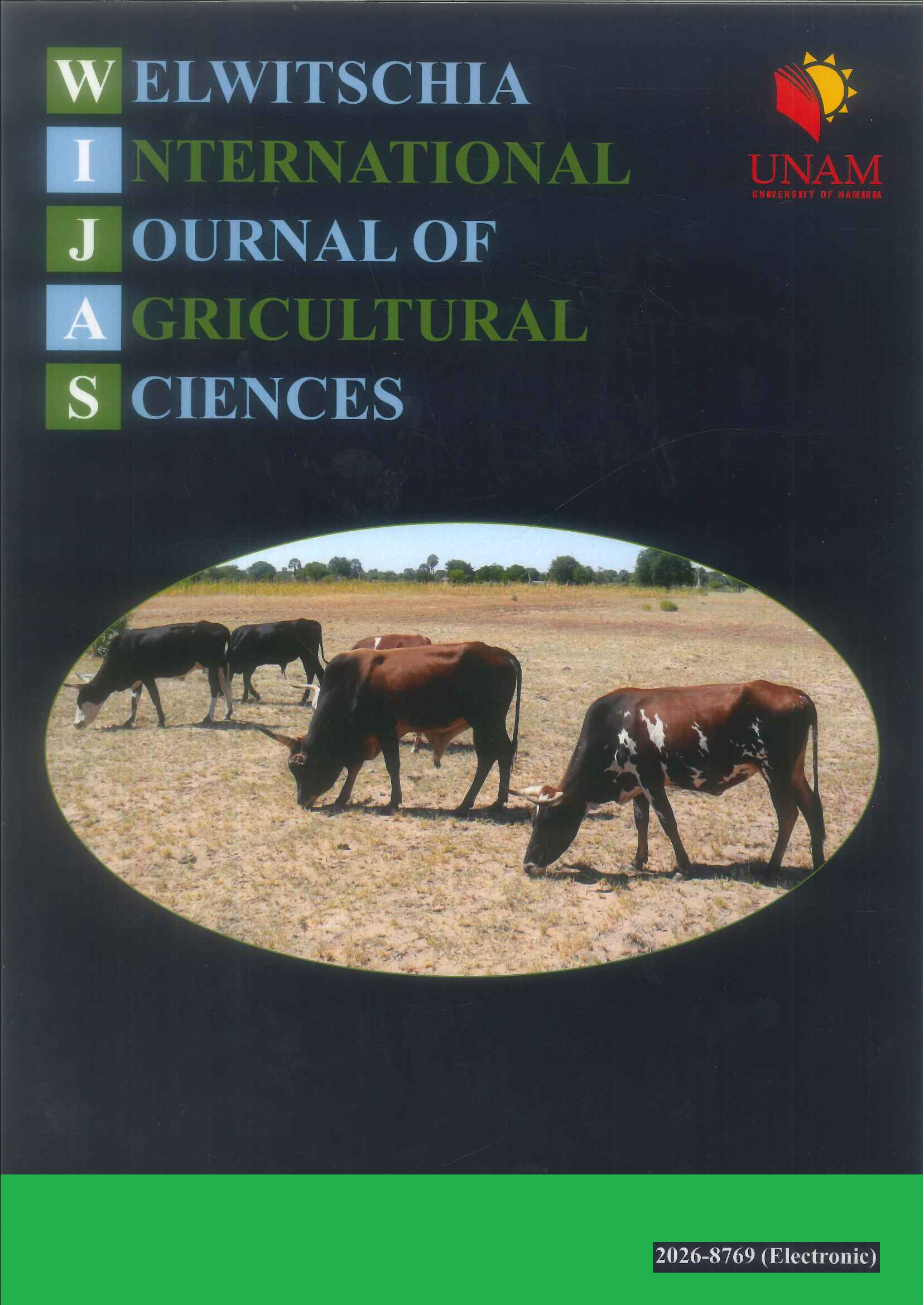Public Spending as a Predictor of Livestock Total Factor Productivity in Namibia
Keywords:
Agricultural Indices, Malabo declaration, Productivity in livestock sector, livestock productionAbstract
This paper investigates public spending and its catalytic role towards a productive agricultural sector. This was done empirically by testing how agricultural total factor productivity could be increased. Data used is for the period 1991 to 2021. A Tornqvist-Theil Index was developed. A simultaneous equation became the chosen and implementable analytical tool for this study. While an agricultural total factor productivity index for Namibia did not exist before, the livestock component was generated for the first time in this study to fill this gap. Stunning is the fact that the Malabo declaration in terms of its convergence target of 10% is not yet met. The results show that by increasing productive labour to the livestock subsector by 10%, real gross domestic product will increase by 12%. Likewise, should capital formation and spending towards agriculture be increased to 10%, the growth of the agricultural sector will increase by 8.5%. This would require input-base needs to be expanded for output to increase. The work done by the Namibian Government so far yearn for further efforts to create more jobs, increase food production, and foreign income earning, remains to be addressed. To achieve all these, compliance with the Malabo declaration would be necessary.
Downloads
Downloads
Published
How to Cite
Issue
Section
License
Copyright (c) 2022 Helmke Jens Sartorius von Bach, Jacob Nyambe

This work is licensed under a Creative Commons Attribution-NonCommercial-NoDerivatives 4.0 International License.
The Welwitschia International Journal of Agricultural Sciences (WIJAS) is published under a Creative Commons Attribution 4.0 (CC BY 4.0) license. The license allows users to distribute, remix, adapt, and build upon the material in any medium or format, provided that attribution is given to the creator. The license also allows for commercial use. The WIJAS has migrated from a CC BY-NC 4.0 license to a CC BY 4.0 license to allow for further sharing and re-use of knowledge with no restrictions.

